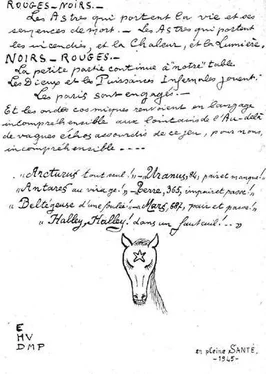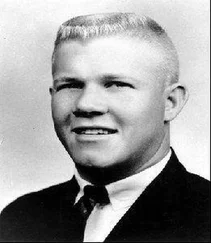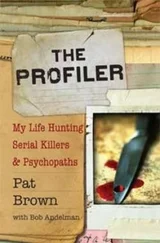“Perhaps rue des Lombards?” Massu asked.
The mention of this property shook her. She also seemed disturbed by the fact that the address had been posted on a sheet attached to the carriage door. As Massu described the scene, Petiot’s hand opened, her handkerchief fell to the floor, and she fainted. This would not be the last time she would collapse—or pretend to collapse—in the middle of an interrogation.
WIVES of criminals, Massu later reflected, were indeed an interesting lot.
There are those who, real panthers in madness, defend their men with claws out; there are the cold and insensitive ones, who wrestling step by step, discuss each argument and answer your questions with other questions; there are the stubborn ones who can pass the entire night in total silence against the light of the interrogation; there are still others, who, shaken and in distress, discover as you do that they have lived for years beside a monster
.
In which category did Georgette Petiot belong? And what about Maurice? Massu was eager to find out.
The commissaire began the first interrogation of Maurice by exploring his background, establishing that he had, like his older brother, been raised by his aunt Henriette Gaston and educated by his uncle, Vidal Gaston, now deceased. The Petiot brothers had been close, but, in the early 1930s, Maurice told the commissaire, they had drifted apart. His relationship and then marriage to Monique had resulted in what he called “a little chill.” After the wedding on September 22, 1934, the brothers did not speak for five years.
After the exodus in the summer of 1940, Maurice claimed that he had returned home to find that his warehouse had been sacked. He had begun to make regular trips to Paris to replenish his stock and, in the process, mend his relationship with his brother. “I have eaten lunch with him on each trip,” Maurice said, adding that this was often followed by dinner with Marcel, his wife, and son. This occurred about every two weeks.
Massu asked what he knew about 21 rue Le Sueur. Maurice replied that he remembered his brother, or perhaps Georgette, speaking at some point, probably in 1942, about the purchase of a new property in Paris. Maurice emphatically denied having any further information on the topic. “I have never known which street this private mansion was on, and I have never been there.”
When pressed, however, Maurice soon qualified this statement. Yes, he knew the address and he had in fact been there three or four times. In July or August 1943, Maurice had applied anti-mite treatment on the bug-infested furniture and rugs. A few months later, probably December 1943, he had gone to shut off the water in case of an accident with the sudden arrival of cold weather. The last time, January 1944, he had brought an architect to look for possible leaks that might be causing humidity problems in a neighboring building on rue Duret.
Asked if that was all he knew about the town house, Maurice Petiot said that it was. Massu, however, would soon have good reason to be skeptical.
8.
A DELIVERY
MY HUSBAND GAVE ME A ROSETTE NECKLACE, A RING WITH A SOLITAIRE OF FIVE CARATS, I BELIEVE …
AND A CROSS MADE OF GOLD.
—Georgette Petiot
CURFEW, blackouts, air raid sirens, long lines outside shops, and the daily risk of unwarranted denunciations, which poured in to German authorities at a staggering rate, all compounded the hardships suffered from a lack of food and fuel. “Paris had been reduced to a sham,” Jean-Paul Sartre said. He compared the occupied city to “empty bottles of wine displayed in the windows of shops which could no longer manage to stock the real thing.”
As a result, many Parisians resorted to Système D, a colloquial expression for a “do it yourself” approach that involved stretching meager resources as far as possible and finding the least unacceptable substitutes. Coffee was brewed with chicory, chickpeas, or roasted acorns. Tea was made from apple skins, and milk was skimmed and watered. Cigarettes were rolled with Jerusalem artichoke or nettles. Potatoes were peeled after boiling to make them last longer. Thin leek soup was often served as dinner, accompanied by new dishes like turnips, previously viewed only as “cow food.” Chestnuts spiced up bland desserts, which were otherwise expensive and difficult to obtain.
Carrots, beans, and a variety of vegetables were grown in window boxes, on rooftops, and in large public spaces like the Tuileries, Luxembourg Gardens, and the Esplanade des Invalides. Rabbits and hens were raised on balconies and in broom closets. Pigeons became an increasingly rare sight in parks. The prefect of Paris warned against the health hazards of eating “stewed cat.” During the Nazi Occupation, French men and women were consuming an estimated half the total calories that they had in the Depression, circa 1935–1938. Wartime diets in France were probably the lowest in calories in Western Europe.
By March 1944, the cold winter was at last giving way to the arrival of spring, the “ballet of buds,” as Massu put it, that danced on the quays, parks, and windowsills around Paris. Alas, the commissaire did not have time to enjoy it as much as he would have liked. There were seemingly endless meetings with the heads of brigades and principal inspectors—a council of ministers for the police, he joked. “I have never loved these chitchats where you lose precious time.” he said. He often arrived late, left early, and in the meantime, kept his eyes glued to the clock. Above all, he was consumed by the Petiot case.
After Madame Petiot recovered from her faint, or feint, at Massu’s office, the commissaire asked her to accompany him to her family’s apartment on the second floor at 66 rue Caumartin. Massu exited his office first, landing in a crowd of reporters and photographers who fired questions rapidly. “Did she confess?” one journalist yelled. “Did she help dispose of the bodies?” another asked. “Did she help her husband flee?”
“Gentlemen,” Massu said. “My secretary is going to speak to you.” As the reporters rushed off to hear the announcement, thinking no doubt of impending deadlines, the commissaire escaped down the corridor with Madame Petiot and slipped into a car waiting outside on the quay.
A few miles away, at rue Caumartin, a crowd of about one hundred people jammed the sidewalks and spilled over onto the road, and onto the nearby rue Saint-Lazare. Photographers and reporters were there looking for a scoop. “Those lads are everywhere like mushrooms,” the chauffeur said to Massu in the car. A motion picture camera was set up to shoot their arrival.
“Assassins!” Georgette Petiot screamed as she tried to make her way to her apartment. “You are the assassins! You are jeering at my distress.” She had only gone to Yonne to see her son, she yelled.
After a locksmith hired by the police opened the door, which had been locked since the last visit, Commissaire Massu, Georgette Petiot, and a team of investigators entered the apartment. While detectives searched, Petiot sat in an armchair in her living room, adorned with Chinese vases, fine porcelain, and tapestries on the wall. The commissaire resumed his questioning: “How did you live here?”
“As the good middle-class citizens that we were,” she said in an angry tone that Massu suspected had been inspired in part by her encounter with the hostile mob. “We often went to the theater and the cinema. It is not forbidden, as far as I know.” Massu asked if her husband had a lot of free time. “Obviously,” she answered, although he often had to leave in the middle of a performance.
“Did he say where he went?” Massu asked.
“To the sick, of course.”
“Were you ever astonished by the jewels and the linen that your husband often brought in his cart?”
Читать дальше












